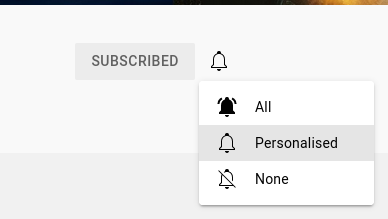
Personalization in user experience is a very productive concept which all designers and builders should take note of. Personalized apps or websites make users feel like the platform just gets them and understands what exactly they need.
In this article, we’ll be learning what personalization in user experience means, different forms of personalization which exist, and how personalization can impact brands.
What is Personalization in User Experience?
The goal of every user experience designer is to ensure that people have a great time while using their products. Personalization tailors the user experience of people based on their interests, browsing history, and preferences.
This includes smarter algorithms and more experiences tailored to the interests of users. Some plaforms use recommendation engines and customized user interfaces as personalized touches.
For example, Google allows users to customize their Chrome user interface, changing things like themes, colors, appearance, etc. Platforms like Netflix and Spotify analyze your past behaviour (movies watched, songs listened to), to suggest content they think you’ll enjoy. These are real-life examples of personalized user experience.

Different Forms of Personalization in Design
Studying digital platforms which incorporate personalization suggests that user experience designers can personalize their designs in different forms, including:
- Customized User Interfaces & Experiences: Some websites or apps allow users to customize their interfaces and experiences according to their preferences. For instance, Medium allows users to choose some topics of interest, when signing up.
- Location-Based Recommendations/Services: Mobile apps especially, often use GPS data to offer location-based services. This can range from offering restuarant recommendations based on the user’s current location, to customizing routes and directions based on traffic conditions and user preferences.
- Recommendation Engines: This is one of the most common forms of personalization. Platforms analyze your past behaviour on their website or app to suggest content they think you’ll enjoy, like I mentioned earlier. Netflix, Amazon, and Spotify do this a lot.
- Personalized Notifications: Another form of personalization is personalized notifications. Mobile apps and websites can send personalized notifications to their users based on their behaviour. For instance, an e-commerce app can use customer data, like their browsing or purchase history, to create personalized offers.
- Adaptative Learning Systems: Some educational platforms use adaptative learning algorithms to personalize the learning experience for each student. These systems analyze a student’s performance and learning style to recommend appropriate learning materials, quizzes, and exercises.
Benefits of Personalization
Personalization in user experience design offers a number of benefits that can positively impact a brand, including:
Increased Customer Loyalty
When a brand remembers your preferences and treats you like a VIP, it’s hard not to feel special. Of course, you’d want to stick around. Therefore, personalization helps brands improve customers’ loyalty.
User Retention
Personalization also helps brands retain users. When users come across digital platforms that understands their needs, and provide relevant & helpful content, they’re more likely to keep on using that platform.
Enhanced Brand Perception
Personalization reinforces a brand’s commitment to providing the best experiences for their customers. By delivering tailored experiences that prioritizes user needs or preferences, businesses can enhance their brand perception, positioning themselves in the industry as customer-centric.
Optimized User Journey
Personalization helps designers and brands create smoother and more intuitive user journeys. By analyzing user behaviours, needs, and patterns, designers find it easier to identify pain points and opportunities for improvement, thereby optimizing the user experience at every point.
Conclusion
Personalized touches on a digital platform is like a digital love language that makes online experiences more personal and a lot more fun.
However, we have to conduct sufficient research to understand what exactly our users need, in order to find out how to personalize and tailor their content. Use surveys, interviews, and concrete data to drive personalization.
Technology keeps evolving and so, user experience designers should look out for more ways to engage their users and make their needs a priority.
Thank you for reading this article! Please leave some claps if you liked it.
The Power of Personalizing User Experience was originally published in UX Planet on Medium, where people are continuing the conversation by highlighting and responding to this story.